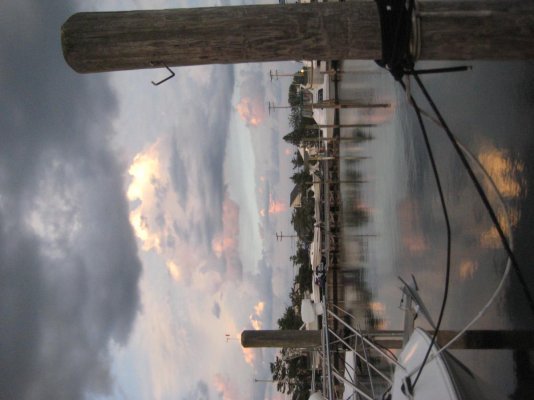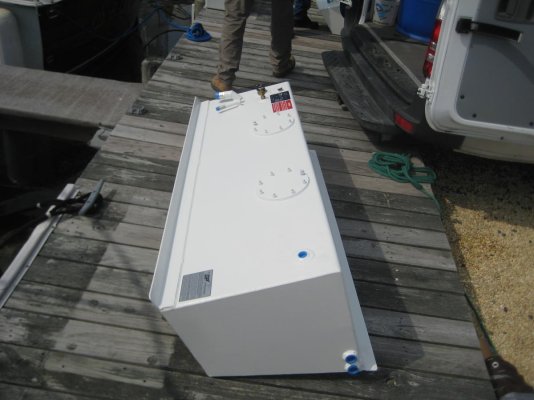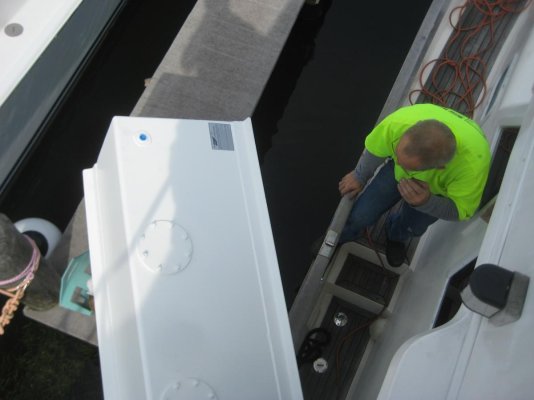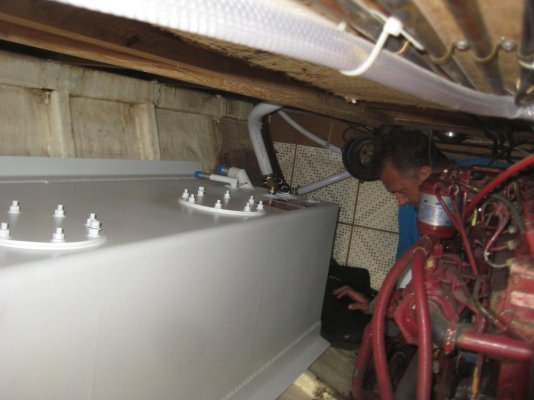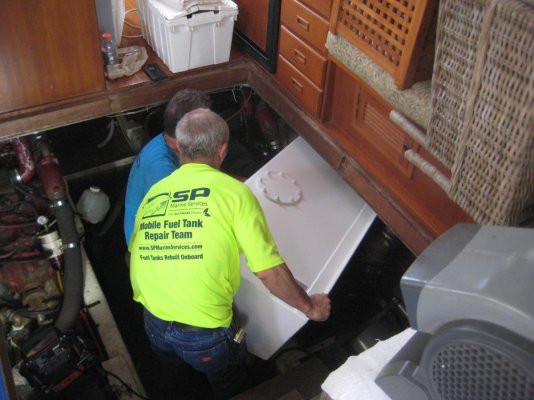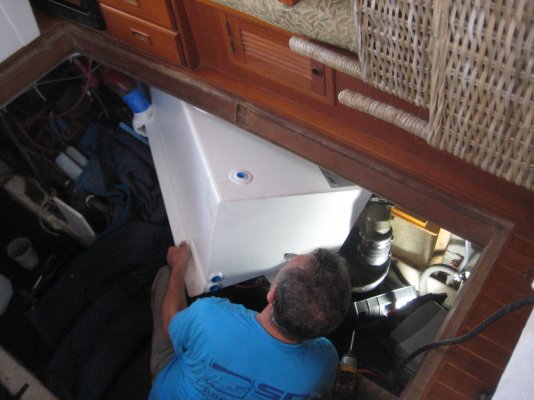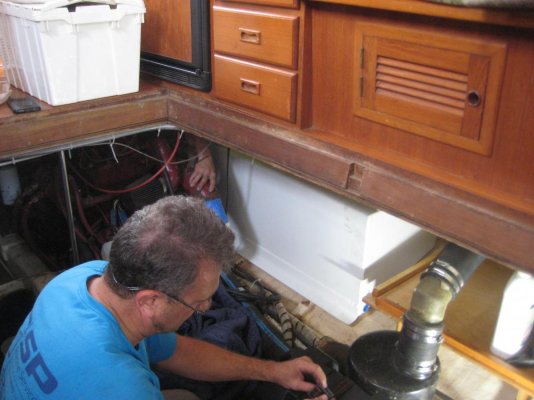DHeckrotte
Guru
Moving along the path towards 'wholeness in fuel tankage', the question turns to 'how much capacity should we try to have aboard?' My calculation shows that the original tanks could each contain 176.9 gallons or by another approximation, 177 gallons. The boat's listing stated that she had 200 gallons. Given that I cannot get that much capacity in the proposed three-linked-tank replacements, what should I be willing to accept? Bear in mind that we really have no idea after two seasons and about 100 hours on the hourmeters and some unknown leakage loss, what out burn rate is on this 38' 26000 lb boat is at 8 knots/1800 rpm on the Perkins 6.354s.
I've made a plywood mock-up of a three-linked-tank setup and I'll find out whether I can get 'em in, tomorrow. Pics (and perhaps screams, if I have to modify the models) to follow on the morrow!
I've made a plywood mock-up of a three-linked-tank setup and I'll find out whether I can get 'em in, tomorrow. Pics (and perhaps screams, if I have to modify the models) to follow on the morrow!

